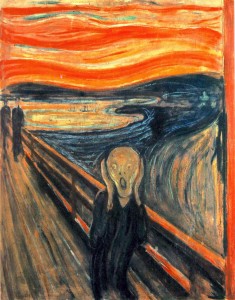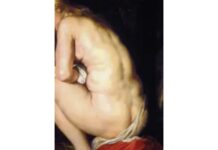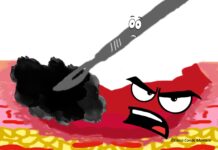The mind and skin arise from the same embryonic layer, the ectoderm. This common origin helps to understand many skin disorders with associated psychological component, which can be classified into 3 subgroups:
- Psychophysiological disorders: skin pathology exacerbated by psychological factors:
- Psoriasis, atopic dermatitis, acne, urticaria, itching, alopecia
- Primary psychiatric disorders: psychiatric syndromes with dermatological expression
- OCD, Trichotillomania, factitial dermatitis, body dysmorphism, delirium parasitorum, glosodynia, vulvodynia
- Secondary Psychiatric Disorders: Psychosocial impact of cutaneous disorders
In the field of skin wounds, psycho-dermatology plays an essential role.
On the one hand, the psychosocial impact of chronic skin wounds greatly limits the quality of our patients. There is a special interest in the validation of quality of life scales to quantify this impact, with the involved socio-economic costs.
On the other hand, and this is the topic on which we are going to focus today, there are the factitious lesions or dermatitis artefacta, which represent a diagnostic and therapeutic challenge, with a high consumption of time and resources.
Dermatitis artefacta includes a wide spectrum of skin lesions self-provoked by the patient, who denies his responsibility in their onset. The motivation for the production of these wounds is the satisfaction of an unconscious psychological need, usually the desire for medical care. Therefore, many times dermatitis artefacta can be framed in a Munchausen syndrome, in which the patient, repeatedly, causes lesions in different organs and seeks to be studied and treated in different hospitals. Frequently, these are patients with a history of child abuse, sexual abuse, personality disorder, depression, anxiety or impulse control disorder.
It must be differentiated from injuries produced by simulators, who also deny their authorship, but do so consciously to achieve a profit, usually economic or legal. In factitious disorders, motivation is unconscious.
There are few series in the literature on factitious dermatitis, as it is a diagnostic challenge . Available data suggest that it is more frequent in middle-aged women and patients with low sociocultural level. The clinical manifestation of these disorders varies according to the way in which the lesions are produced: excoriations (nails, cutting objects), blisters, scabs, panniculitis (injection of substances), eczema (irritants), hematomas, ulcers (sharp objects, caustic products). The attitude of the patients can give clues about the self-provocation of the lesions, from striking calm and complacency (belle indifference), to an excessive concern with angry signs.
Up to 30% of factitious dermatitis present as skin ulcers. These lesions “do not heal” despite adequate treatment. The morphology of these ulcers is peculiar, frequently with geometric edges and inexplicable evolution, with worsening associated with stressful moments. Sometimes other similar lesions occur in the periphery or in other locations, which may be more acute or chronic, and they can give us clues about the type of mechanism used for their production (for example, burn with a caustic).
However, given that this is a diagnosis of exclusion, despite strong suspicion, a complete medical history and further tests must be carried out in order to rule out other pathologies that can lead to ulcers of a similar clinical appearance.
Differential diagnosis:
- Venous leg ulcer
- Occlusive Vasculopathy
- Vasculitis
- Tumour
- Infectious process
- Pharmacological cause
- Pyoderma gangrenosum
Further tests:
- Deep incisional biopsy:
- Inflamed edge: H-E, Gram, special stains
- Ulcer edge: culture (including atypical mycobacteria)
- Blood tests:
- CBC, biochemistry, proteinogram, autoimmunity
- Imaging tests
In many cases, diagnosis is complicated and you never discover how the injuries occur. In fact, it is not uncommon to diagnose a factitial ulcer after it has been treated as an injury of another etiology, often pyoderma gangrenosum (which is another diagnosis of exclusion). A clue for diagnosis is improvement with exclusive treatment with occlusive dressings, without the possibility of manipulation. In order to achieve a close supervision, it is sometimes necessary to admit the patient. You can find an example of this diagnosis and treatment in this article: Factitious ulcer misdiagnosed as pyoderma gangrenosum.
This pathology requires a multidisciplinary approach, with fluid communication and agreement in the management between the different professionals. Diagnosis, follow-up and treatment must be carried out jointly by dermatology and psychiatry.
It is recommended to avoid direct confrontation, establish a doctor-patient trust relationship, and explore the psychological dimension through Socratic dialogue, with open questions. It should not be forgotten that the patient consults for a problem in the skin, not mental, and can often refuse psychiatric help.
Dermatitis artefacta treatment can be frustrating for the dermatologist. Since the unconscious gain of many patients is the receipt of medical care, their goal is not to be cured. It is frequent the appearance of new lesions or worsening of the previous ones when the moment of the discharge is near. Continuous follow-up should be planned to avoid these outbreaks.
The prognosis of these patients is poor, with a high percentage of recurrences and the possibility of autolytic attempts. We cannot forget the risk of infectious complications of these lesions and the potential iatrogenia when suspecting other diseases that require aggressive treatments, such as immunosuppression in the case of pyoderma gangrenosum.
When faced with a factitial ulcer, we always have more questions than answers.
If you want to go deeper into the subject of artefactal dermatitis, I recommend that you read this interesting review, with an excellent iconography: Dermatitis artefacta: a review.
Also available in: Español (Spanish)







